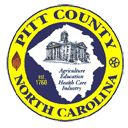The Safest Way to Wash Produce
go.ncsu.edu/readext?599673
en Español / em Português
El inglés es el idioma de control de esta página. En la medida en que haya algún conflicto entre la traducción al inglés y la traducción, el inglés prevalece.
Al hacer clic en el enlace de traducción se activa un servicio de traducción gratuito para convertir la página al español. Al igual que con cualquier traducción por Internet, la conversión no es sensible al contexto y puede que no traduzca el texto en su significado original. NC State Extension no garantiza la exactitud del texto traducido. Por favor, tenga en cuenta que algunas aplicaciones y/o servicios pueden no funcionar como se espera cuando se traducen.
Português
Inglês é o idioma de controle desta página. Na medida que haja algum conflito entre o texto original em Inglês e a tradução, o Inglês prevalece.
Ao clicar no link de tradução, um serviço gratuito de tradução será ativado para converter a página para o Português. Como em qualquer tradução pela internet, a conversão não é sensivel ao contexto e pode não ocorrer a tradução para o significado orginal. O serviço de Extensão da Carolina do Norte (NC State Extension) não garante a exatidão do texto traduzido. Por favor, observe que algumas funções ou serviços podem não funcionar como esperado após a tradução.
English
English is the controlling language of this page. To the extent there is any conflict between the English text and the translation, English controls.
Clicking on the translation link activates a free translation service to convert the page to Spanish. As with any Internet translation, the conversion is not context-sensitive and may not translate the text to its original meaning. NC State Extension does not guarantee the accuracy of the translated text. Please note that some applications and/or services may not function as expected when translated.
Collapse ▲It’s always important to make sure you’re buying quality produce, but food safety doesn’t end at the store. Once you’re home, you want to make sure to get rid of as much bacteria as possible so you and your family can enjoy a safe meal or sweet treat.
That’s where washing your fruits and vegetables comes into play, but this isn’t your standard scrub-a-dub-dub in a tub. Because of the texture of certain fruits and vegetables, you’ll need to approach cleaning them in different ways.
You might think you don’t need to wash fruits like cantaloupe because you don’t consume the rind. But there’s a chance of transferring bacteria from the outside when you cut into the fruit. Better safe than sorry wins the day, so you should still rinse and clean thoroughly using brushes or similar tools.
And don’t cut corners when it comes to cleaning produce. Even a tomato has tiny, almost microscopic pores where bacteria can hide. Fruits and vegetables with smooth exteriors are easily rinsed with running water and a bit of friction.
With that in mind, what’s the best way to wash produce? Ben Chapman, food safety specialist with NC State Extension, shares his tips for cleaning produce and debunks some myths about food safety in our latest video—give it a click (but wash your hands first)!
Special Thanks
Homegrown in the Kitchen was filmed in the Dinah E. Gore Teaching and Research Kitchens at NC State University. This innovative, state-of-the-art kitchen complex was designed to enhance and extend our work in teaching, research, and Extension.




